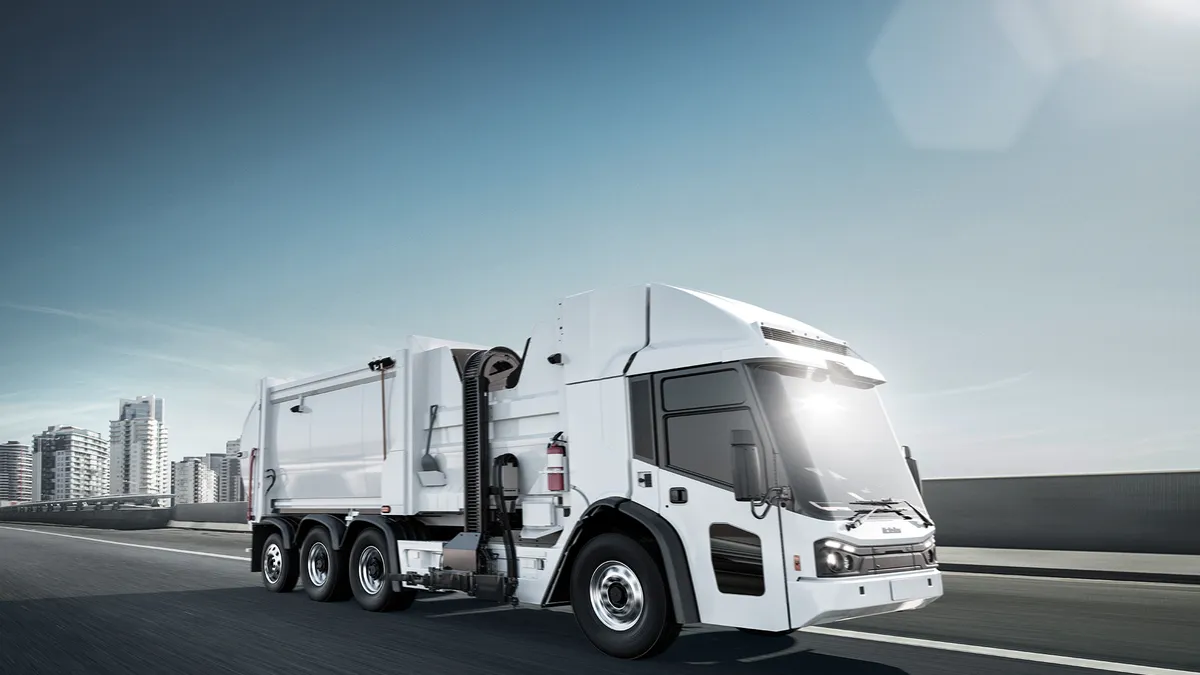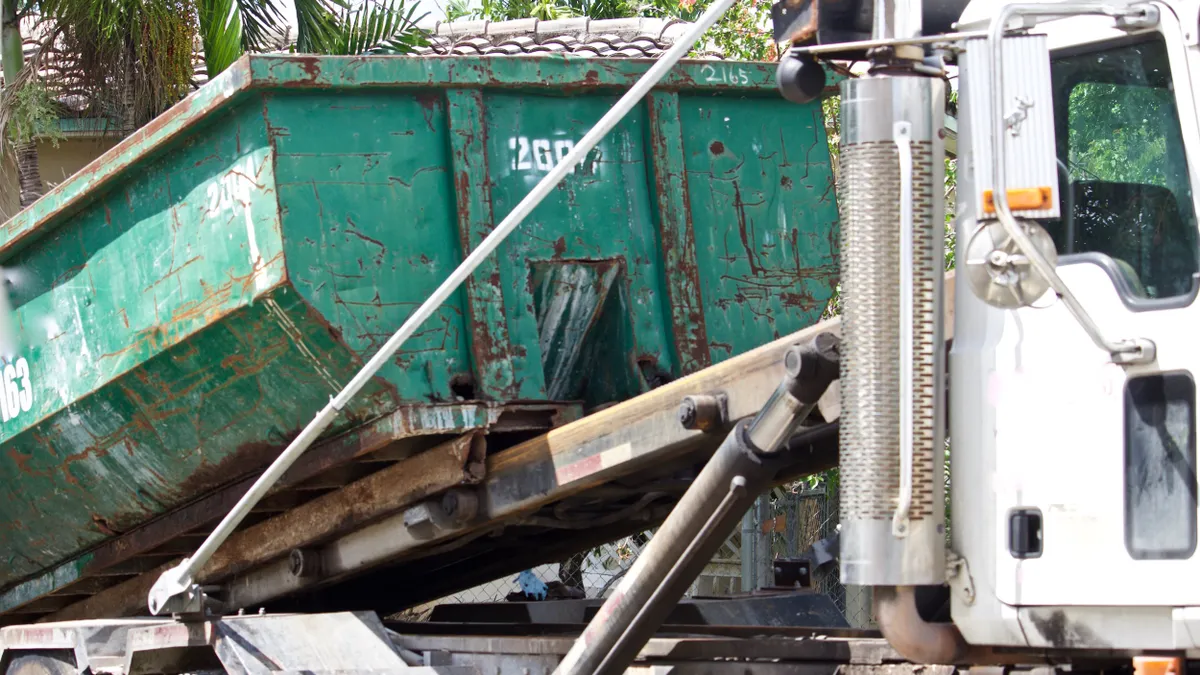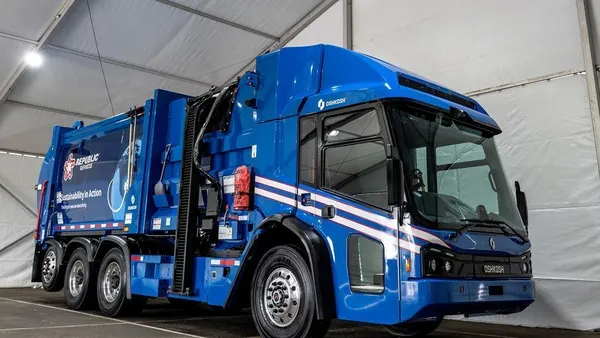Over the past five years, electric vehicles (EVs) have undergone a remarkable transformation. And the waste management industry is seeing significant advancements with electric refuse collection vehicles (eRCVs). The recent introduction of the McNeilus® Volterra™ ZSL™ fully integrated, zero-emission refuse collection vehicle and the McNeilus® ePTO self-contained, advanced electric power takeoff system are the most recent examples of eRCV technology in the industry.
Here, we dive into the advantages of eRCVs, along with some challenges and concerns, and we explore the promising future that lies ahead.
Advantages of Electric Refuse Collection Vehicles
The rise of eRCVs represents a pivotal shift in the waste management landscape. These vehicles offer a multitude of anticipated advantages that extend beyond the industry, positively influencing the environment and society at large.
- Noise Management: Refuse collection typically occurs during early morning hours, and the rumble of refuse collection with ICE vehicles can disrupt neighborhoods. In a 2019 CBS News report from the Chicago area, the number one complaint related to refuse collection was early morning noise. Electric refuse collection vehicles operate with low noise levels, helping contribute to quiet urban and suburban environments.
- Cost Considerations: While the initial investment in eRCVs may be higher compared to their ICE counterparts, the potential savings in total cost of ownership (TCO) can be substantial. Electric vehicles generally have less moving parts, which can help minimize maintenance and repairs. The cost difference between electricity and diesel fuel or compressed natural gas is also a factor that has potential to lower operational expenses over the vehicle’s lifespan.
- Environmental Responsibility: Unlike more traditional internal combustion engine (ICE) vehicles, electric power produces zero emissions in use, which can help mitigate air pollution from greenhouse gasses. This helps contribute to local Clean City initiatives, healthy communities, and a manageable carbon footprint.
- Technological Advancements: Improvements in battery technology, such as the widespread adoption of lithium-ion batteries, have significantly increased energy density, charging speeds and overall driving range. In addition, EV manufacturers have been actively improving and refining powertrain systems. These advancements have resulted in improvements that have made some powertrain systems comparable to conventional ICE vehicles for performance. Advanced technology is also evident in task-specific vehicles such as the McNeilus Volterra ZSL refuse vehicle. The purpose-built eRCV can complete a full collection route on a single charge and can quietly and efficiently perform the daily task with zero emissions. Its collaborative regenerative braking system can recharge the batteries while adjusting to battery state of charge and road conditions, extending brake life and route capability.
Challenges with Electric Refuse Collection
While eRCVs present an array of benefits, their adoption has not been without challenges. Many of these concerns have been mitigated by technological advancements or through close coordination between manufacturers and waste management companies.
- Range Limitations: Because operational range is determined by battery capacity, waste management companies may have concerns about route planning. Advanced battery technology and innovations such as cooperative regenerative braking systems can extend the eRCVs operating range. For example, the McNeilus Volterra ZSL eRCV has sufficient range to complete a wide variety of collection routes on a single charge.
- Charging Infrastructure: As passenger EVs have been hampered at times by the sparsity of extensive charging infrastructure, refuse collection vehicle fleets have the advantage of returning to the same location at the end of the day. This enables eRCV fleets to use a charging system that can be maximized for operational costs and built for resiliency.
- EV Investment: While the initial investment in electric vehicles and charging infrastructure can be significant, it can be offset by long-term savings in operation and maintenance costs, operational efficiences and by financial incentives provided by governmental agencies where available. Governments and regulatory bodies may offer additional incentives and subsidies to encourage the adoption of zero-emission vehicles, including incentives for developing private charging infrastructure systems.
Conclusion
The emergence of eRCVs marks a significant turning point in the waste management industry’s journey toward sustainability and environmental responsibility, and the global adoption of EVs is accelerating. The advances in eRCV technology are beginning to propel the industry forward to a brighter and cleaner future.
The initial challenges that hindered the transition to eRCVs are being replaced with technological advancements, incentives and policies designed to support EV adoption within the refuse industry. The way electric technology continues to evolve, along with other alternative fuel sources, will continue to shape the transition to zero emission refuse collection vehicles. As we look ahead one thing is certain: the waste management landscape is advancing farther and faster than anyone would have guessed just a few years ago.










